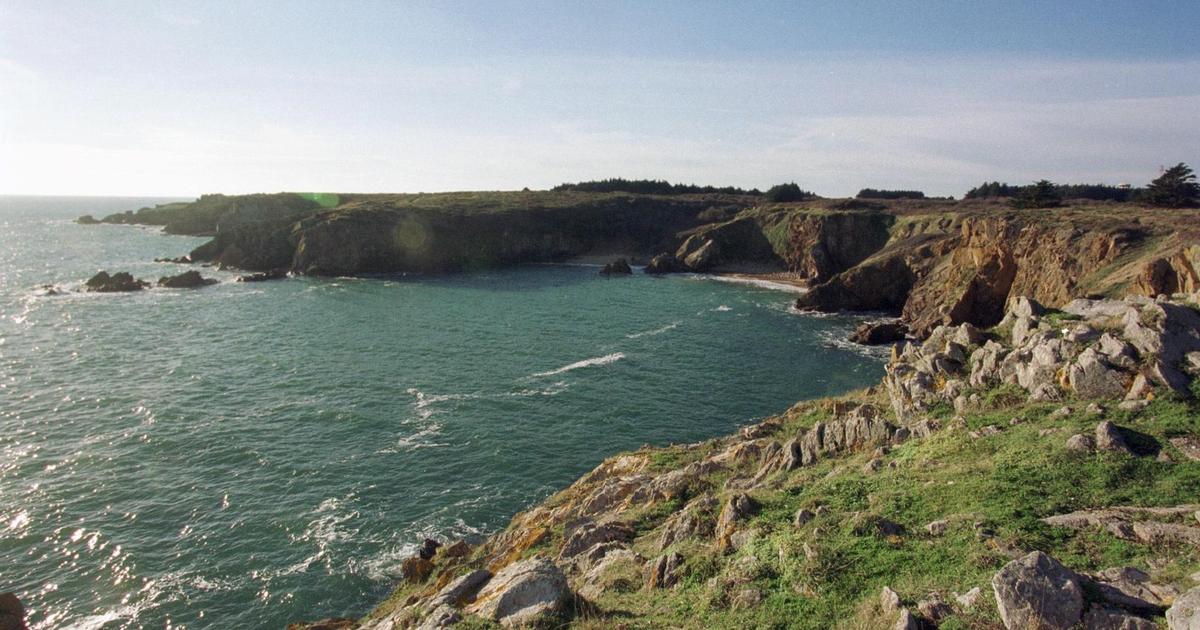Faced with the increasingly frequent appearances of sites almost two millennia old, the town hall of the island of Yeu decided nearly fifteen years ago to recruit an archaeologist to study them. Over time, the phenomenon has grown.
In its stone chest, the skeleton is in a fetal position, with its back to the sea. Dated to around 1600 years before our era, it rests at the bottom of a funerary monument revealed last winter on the island of Yeu by erosion and storms.
Built of stone, four metres wide and bordered by masonry, the monument was until now covered with sand and a few bushes.
But winter storms attacked the dune and tore away part of the tomb. In February, a walker saw a skull protruding from the mound.
“We expected to find a skeleton on a grave. But in the end it was a whole funerary monument, where several individuals rest,” explains, trowel in hand, Annabelle Chauviteau, head of the heritage department at the town hall of the Isle of Yeu.
Also readA medieval port unearthed at the foot of the Vendée castle of Talmont-Saint-Hilaire
Digging around the stone chest, the archaeologists found a second grave, four other skulls and many bones, in a good state of preservation. Crouching down, using a fine dentist’s hook, Yannick Prouin gradually removes the bones before placing them in transparent bags. The archaeo-anthropologist will study and date them in the laboratory once the excavations are finished.
This year, no fewer than four archaeological sites were revealed on the Isle of Yeu, due to winter storms and erosion. There was the shipwreck cemetery, where 19 medieval tombs were unearthed. Then a presumed Gallic site, where a banquet is said to have taken place: remains of mussels, fish and meat were discovered there. Not far from there, small menhirs have been dated to the Neolithic period.
Faced with the increasingly frequent appearance of archaeological sites, the town hall of the Isle of Yeu decided nearly fifteen years ago to recruit an archaeologist to monitor the coasts and be able to intervene as soon as possible: the ocean can carry away bones or objects as quickly as it reveals them.
Annabelle Chauviteau has since surrounded herself with a network of local residents and walkers, ready to warn her in the event of a new discovery. “These sites are revealed over the course of storms, which are increasingly strong and numerous, and erosion, which has progressed in recent years,” explains the archaeologist.
On the north-eastern side of the island of Yeu, low on the ocean and bordered by beaches, climate change and rising sea levels are increasing the risk of erosion and submersion. On the beach of Petite Conche, the waves swallow several metres of sand some years.
A collaborative scientific project was launched in 2018 to monitor the retreat of the coastline and consider tools to combat marine submersion, which threatens several homes. Led by the University of Nantes, the project is partly informed by photos and testimonies from locals. “Archaeological excavations also help us understand the evolution of the coastline through the ages and put current phenomena into perspective,” explains Agnès Baltzer, co-manager of the ODySéYeu project.
In order not to destabilize the beaches and further increase erosion, the archaeological sites must be restored once the excavations are finished. On the tip of Gilberge, the dune will be reconstructed and the thousand-year-old funerary monument reburied. The skeletons will be returned after study to the archaeological deposit of Port-Joinville, in the north of the island. Sheltered from storms.

Potenciální Očekávání Pro Fotovoltaické Odvětví
Potenciální Přehled Pro Fotovoltaické Trhu – Wakelet
Potenciální Přehled Pro Fotovoltaické Trhu – Telegraph
Potenciální Outlook Pro Fotovoltaické Průmyslu | A Listly List
Raylyst Solar
GETTR – The Marketplace of Ideas
Potenciální Očekávání Pro Fotovoltaické Podnikání
Potenciální Outlook Pro Fotovoltaické Podnikání
Budoucí Outlook Pro Fotovoltaické Průmyslu – User696762 | Papaly
Just a moment…
Raylyst Solar – @dservin7-blog on Tumblr
Potenciální Outlook Pro Fotovoltaické Průmyslu – Asianfanfics
Potenciální Přehled Pro Fotovoltaické Průmyslu – I Can Has Cheezburger?
scarfcougar7 » Infozillon
energybull6 » Free porn HD sex videos
lambdenim8 » AutoVinINFO – Бесплатная проверка VIN
sockbull5 » Qiziqarli.net – Bu Birinchi
peonyfreon6 » Filme Crestine Online HD
gramsalad8 » Latest Scene and P2P Download
energymelody5 » Порно комиксы, мультфильмы, игры, картинки онлайн – отборный аниме и хентай контент
MySQL Fatal Error
Certificate verification problem detected
Bored Panda – The Only Magazine For Pandas
Public profile – iciclejohn6 – Speedgh
User routervise4 – Hangouts Help
pinterest.com/loantwist1/
Public profile – brandsand6 – adpost4u.com Free Classifieds
User orangesalad1 – Minecraft Command Science
Certificate verification problem detected